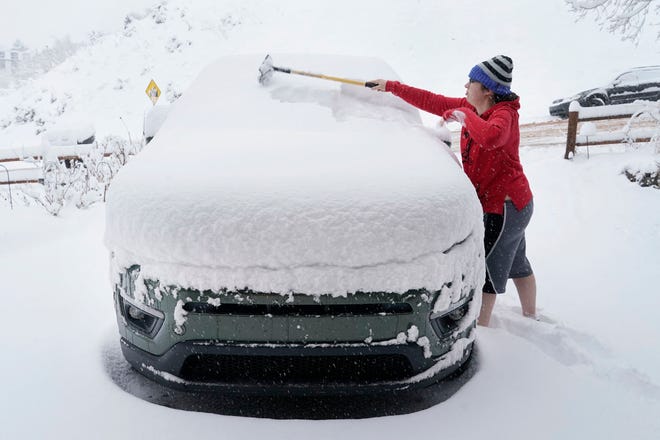The nation's first major snowstorm of the season is expected to hit sparsely populated parts of the northern United States starting Tuesday and continuing through Thursday. Forecasters said the storm will first impact parts of the Pacific Northwest and northern Rocky Mountains before moving into the northern Plains over the next two days.
The storm will impact at least six states and could lead to major travel disruptions, AccuWeather said, adding that “near-blizzard conditions” are possible. The National Weather Service said up to two feet of snow could fall in some areas.
“You should make time early this week to prepare by unpacking winter gear like shovels, coats, hats and gloves,” AccuWeather Meteorologist Joseph Bauer advised. “It may be a good idea to run snow removal equipment such as snow blowers to make sure they are working properly.”
Winter storm warnings are in place
Winter storm warnings and watches were in effect Tuesday for parts of the Cascades and northern Rockies as the storm approached.
“Travel may be very difficult or impossible and tire chains may be required for some vehicles,” the weather service office in Great Falls, Montana, said, warning of “some disruptions to daily life.” They have the appropriate knowledge.” gear and you may want to consider alternative plans.”
“Roads could become snow-covered and slippery by later Tuesday in the Cascades and northern Rockies, and then in the northern High Plains Wednesday into Thursday,” said Weather.com meteorologist Jonathan Erdmann.
“Thursday's gusty winds could lead to blizzard-like conditions across the Dakotas, with blowing and drifting snow, along with reduced visibility,” Bauer said.
NOAA forecast for winter 2023-2024:This is where it is expected to be unusually warm this year
What is a blizzard?
A blizzard is characterized by heavy snowfall and high winds, conditions that make visibility extremely low. Specifically, the weather service defines a blizzard as blowing or falling snow with winds of at least 35 mph, reducing visibility to a quarter-mile or less for at least three hours.
As of midday Tuesday, nearly 2.5 million people are under some level of winter weather alert in anticipation of the storm, the weather service said. Affected states include Washington, Oregon, Idaho, Montana, Wyoming and North Dakota.

Bitter cold to follow the snow
After a snowstorm moves through the region, much of the northern Rockies and northern Plains are expected to experience bitter cold temperatures later in the week.
“In the wake of this storm, an Arctic air mass will bring the coldest air of the season into the Arctic,” Bauer said. “Temperature readings are expected to be 15-35 degrees below the historical average in Montana and Wyoming by Thursday night.”
In the northern Rockies, that could bring the first subzero readings of the season. Low temperatures in the northwest and northern Plains will be common late week and into the end of next week, AccuWeather said, the coldest readings since last spring.


